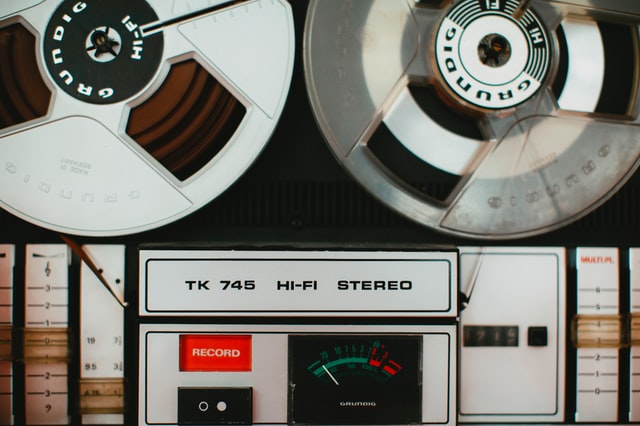For decades, families and individuals recorded their most cherished memories on tapes — from birthdays and weddings to vacations and school performances. Those VHS, MiniDV, or cassette tapes were once the most advanced way to capture moments in time. However, as technology evolved, tapes began to degrade, and the devices needed to play them slowly disappeared. Today, the Tapes to Digital process has become a modern miracle, rescuing these precious moments from the past and preserving them for generations to come.
The Disappearing Era of Analog Memories
Before digital cameras and smartphones, video and audio tapes were the standard for recording personal memories. VHS tapes filled family drawers, while camcorders were a must-have gadget for special occasions. Unfortunately, these tapes have a limited lifespan — typically 10 to 30 years, depending on storage conditions. Over time, magnetic particles that store data begin to break down, resulting in fuzzy visuals, distorted sounds, and even total data loss.
The biggest problem isn’t just deterioration. Tape players and camcorders have become obsolete, and finding a functioning one today is nearly impossible. This has led many families to search for a way to revive their analog footage — and that’s where Tapes to Digital conversion technology plays a crucial role.
What Does Tapes to Digital Mean?
The Tapes to Digital process involves converting old analog recordings into digital file formats that can be easily viewed, edited, and stored on modern devices. This includes converting VHS, VHS-C, MiniDV, Hi8, Betamax, and audio cassette tapes into digital files such as MP4, AVI, or MP3.
The goal is simple: to preserve the original content without losing quality, while making it accessible on today’s computers, smartphones, and cloud storage platforms. Once converted, these digital files can be backed up, shared online, and enjoyed without worrying about physical degradation.
The Step-by-Step Process of Converting Tapes to Digital
Step 1: Preparing the Tapes
Before conversion, professionals inspect each tape for damage, mold, or broken casing. Cleaning and repairing old tapes ensures that playback during transfer is smooth and that no data is lost in the process.
Step 2: Playback and Capture
A functioning tape player is connected to a digital capture device or computer. The video or audio is played in real time, and the digital system records the output. Specialized hardware and software help maintain the original frame rate and audio quality.
Step 3: Digital Conversion and Enhancement
After the footage is captured, the raw file is enhanced using video editing software. Adjustments like color correction, noise reduction, and brightness balance are applied to restore the footage as closely as possible to its original state.
Step 4: Output and Storage
Finally, the converted video or audio is saved in digital formats such as MP4 or WAV. These can then be stored on USB drives, DVDs, or uploaded to cloud platforms like Google Drive or Dropbox. This ensures easy access and safe backup for future generations.
Why Converting Tapes to Digital Is So Important
Preserving Family Heritage
Every tape contains a piece of personal history — a child’s first steps, a wedding dance, or a heartfelt message from a loved one. Tapes to Digital conversion ensures these irreplaceable moments are preserved forever. Digital files do not degrade, meaning that even decades later, the footage remains as fresh and clear as the day it was recorded.
Protecting Against Physical Damage
Tapes are fragile. They can snap, warp, or get damaged by humidity and dust. Converting them to digital eliminates the risk of physical deterioration. Once your memories are stored digitally, you can duplicate them endlessly without losing quality.
Easy Sharing and Accessibility
Gone are the days of rewinding tapes or connecting bulky VCRs. With digital files, you can play videos instantly on a smartphone, tablet, or laptop. You can also share your old memories on social media, send them to relatives overseas, or even create a digital family archive.
Saving Storage Space
Boxes of old tapes take up valuable space in attics or closets. Once converted, hundreds of tapes can fit on a single hard drive or cloud storage account, making it a space-efficient and organized way to keep memories safe.
How Technology Has Revolutionized Memory Preservation
The rise of Tapes to Digital technology represents a major leap in how we handle nostalgia. Artificial intelligence and advanced software can now automatically detect and fix issues in old recordings — such as color fading, shaky footage, or audio distortion.
Modern tools can upscale footage to HD or even 4K resolution, giving old home videos a new life. Audio restoration software removes hissing or background noise, ensuring a cleaner and more immersive listening experience.
In addition, cloud storage services have changed how people manage digital archives. Once your tapes are converted, uploading them to the cloud means you’ll never lose them due to hardware failure. Family members can access these memories from anywhere in the world with a simple link.
DIY vs. Professional Tapes to Digital Services
Some people attempt to convert tapes at home using a VHS-to-digital converter or capture card. While this is an affordable option, it requires patience, technical skill, and proper equipment. The quality might not always match professional standards.
Professional Tapes to Digital services, on the other hand, offer expertise, professional-grade equipment, and quality enhancement tools. They can handle fragile or damaged tapes with care, and their restoration software ensures optimal video and audio output. For priceless family memories, many people find professional conversion worth the investment.
Common Tape Formats That Can Be Digitized
- VHS & VHS-C: Standard home video formats popular from the 1980s to early 2000s.
- MiniDV: Compact tapes used in digital camcorders.
- Hi8 and Digital8: High-quality analog formats used for home movies.
- Betamax: Sony’s professional-grade tape system.
- Audio Cassettes: Used for music and personal recordings.
Each format requires a specific playback device and adapter, which is why professional conversion services are often preferred — they have the right tools for every tape type.
The Emotional Value of Digital Memories
Converting Tapes to Digital is more than a technical process — it’s an emotional journey. Watching old videos can reconnect families with their past, evoke forgotten emotions, and help younger generations see moments they never experienced firsthand.
Digital preservation bridges the gap between generations, allowing parents, children, and even grandchildren to share a piece of family history. These digital files can also be used in memorial videos, family documentaries, or digital scrapbooks.
Future of Memory Preservation
As technology continues to advance, the future of Tapes to Digital conversion looks even brighter. Machine learning and AI are already being used to colorize black-and-white footage, enhance resolution, and synchronize old audio with modern clarity.
Soon, virtual and augmented reality could allow people to experience their family memories in immersive 3D environments. Imagine reliving your childhood home in VR — that’s where technology is heading.
Conclusion
The transition from Tapes to Digital is one of the most meaningful applications of modern technology. It’s not just about converting old media into a new format; it’s about saving history, emotion, and connection. As tapes continue to decay and playback devices become rarer, digitization is no longer optional — it’s essential.


